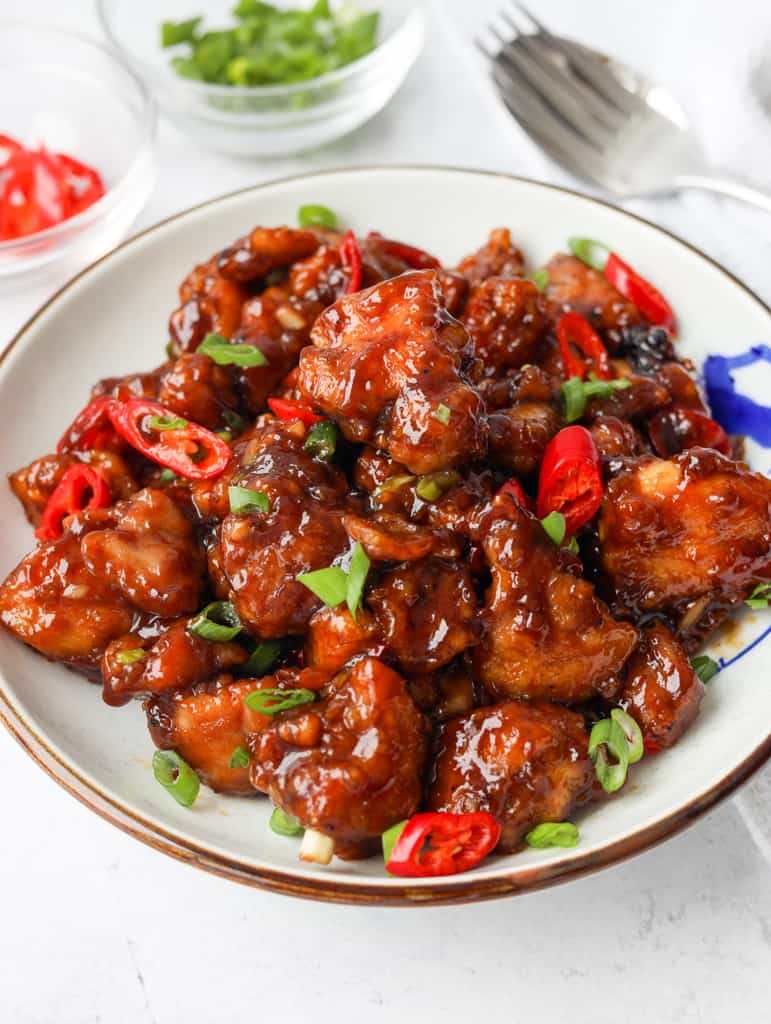Mongolian Chicken: Easy Recipes and Cooking Tips
Mongolian Chicken, despite its name, doesn’t originate from Mongolia. This dish draws inspiration from Chinese-American cuisine and is similar to Mongolian Beef, a popular dish in Chinese restaurants across the United States. It gained its name due to its association with the style of cooking found in Mongolian barbecue restaurants. Historical data points out that Mongolian barbecue, invented by Taiwanese restaurateurs, never actually existed in Mongolia. Hence, Mongolian Chicken evolved as a beloved interpretation of Asian culinary flavors adapted to suit Western tastes.
Key Ingredients and Flavors
Mongolian Chicken features tender chicken pieces, usually thinly sliced or cubed for even cooking. The primary ingredients include soy sauce, garlic, and brown sugar. These ingredients create a harmonious blend of savory and sweet flavors.
- Chicken: Typically uses boneless, skinless chicken thighs or breasts.
- Soy Sauce: Provides umami and depth to the sauce.
- Garlic: Adds aromatic intensity.
- Brown Sugar: Contributes sweetness and helps in caramelizing the sauce.
- Scallions: Often included for their mild onion-like flavor and vibrant color.
Optional ingredients like ginger (for added zing), red pepper flakes (for heat), and rice wine (for complexity) can be added based on preferences. These key ingredients make Mongolian Chicken a delightful dish with balanced flavors and textures.
How to Make Mongolian Chicken at Home
Necessary Ingredients
To make Mongolian Chicken at home, gather these ingredients:
- Chicken breasts – 1 pound, thinly sliced
- Soy sauce – 1/2 cup, regular or low-sodium
- Brown sugar – 1/3 cup, packed
- Garlic – 4 cloves, minced
- Ginger – 1 tablespoon, freshly grated
- Scallions – 4, chopped
- Red pepper flakes – 1 teaspoon, optional for spice
- Cornstarch – 2 tablespoons, for coating the chicken
- Vegetable oil – 2 tablespoons, for frying
- Water – 1/4 cup, for the sauce
- Rice wine – 1 tablespoon, optional for added depth
- Prepare the Chicken: Coat the chicken slices with cornstarch. Ensure each piece is evenly covered.
- Heat Oil and Fry Chicken: In a large skillet, heat vegetable oil over medium-high heat. Fry the chicken until it’s golden brown and cooked through, about 5-7 minutes.
- Make the Sauce: In a bowl, combine soy sauce, brown sugar, garlic, ginger, water, and rice wine if using. Mix until the sugar dissolves.
- Combine Chicken and Sauce: Add the sauce to the skillet with the fried chicken. Stir to coat the chicken completely.
- Thicken the Sauce: Simmer the mixture for 2-3 minutes until the sauce thickens and coats the chicken.
- Add Scallions and Spices: Stir in the chopped scallions and red pepper flakes. Cook for an additional minute.
- Serve: Transfer the Mongolian Chicken to a serving dish. Garnish with extra scallions if desired.
By following these steps, you’ll create a flavorful Mongolian Chicken dish that combines savory and sweet culinary elements.
Comparing Mongolian Chicken to Other Asian Dishes
Differences From Mongolian Beef
Mongolian Chicken and Mongolian Beef use similar ingredients but differ in their main protein and texture. Mongolian Chicken, featuring chicken breasts, offers a lighter, more tender texture compared to the robust flavor of beef. Both dishes include a savory-sweet sauce made from soy sauce, garlic, and brown sugar, but the cooking techniques vary. While Mongolian Beef often involves thinly sliced beef cooked in high heat, Mongolian Chicken uses chunks of chicken that are coated in cornstarch and fried until crispy.
Similarities With Other Stir-Fry Dishes
Mongolian Chicken shares common elements with other stir-fry dishes, such as quick cooking and a mix of fresh ingredients. Like Kung Pao Chicken and Sweet and Sour Chicken, Mongolian Chicken features a balanced sauce combining sweetness and saltiness. The use of soy sauce, garlic, and ginger forms the base of the flavor profile, similar to many Asian stir-fries. Additionally, adding vegetables and optional red pepper flakes enhances the dish’s nutritional value and spiciness.
Healthy Variations of Mongolian Chicken
Using Alternative Sweeteners
Incorporate alternative sweeteners to reduce sugar content while maintaining flavor. Use honey, agave syrup, or maple syrup instead of brown sugar. These options contain natural sugars and offer different taste profiles while lowering processed sugar intake. For a lower-calorie option, opt for stevia or monk fruit extract. Both sweeteners lack calories and don’t spike blood sugar levels, making them suitable for diabetic-friendly meals.
Low-Carb and Gluten-Free Options
Adjust recipes to make Mongolian Chicken suitable for low-carb diets and gluten intolerance. Replace traditional soy sauce with tamari or coconut aminos. Both alternatives are lower in carbohydrates and gluten-free. For thickeners, use xanthan gum or arrowroot powder in place of cornstarch. They provide desired consistency without adding significant carbs. Serve the dish over cauliflower rice instead of white rice to further reduce carbohydrate content and enhance vegetable intake.
Conclusion
Mongolian Chicken offers a delightful fusion of flavors that can be easily adapted to suit various dietary preferences. Whether you prefer the traditional savory-sweet profile or opt for healthier alternatives like honey and stevia, this dish remains a versatile and satisfying option. By experimenting with low-carb and gluten-free substitutes, you can enjoy Mongolian Chicken without compromising on taste or texture. So next time you’re craving a flavorful meal, give these variations a try and savor the deliciousness of Mongolian Chicken in a way that fits your lifestyle.






